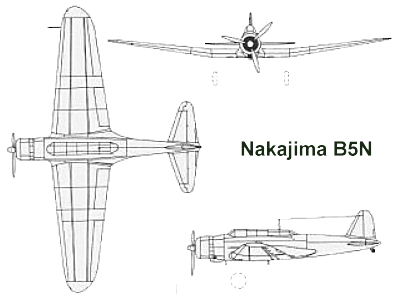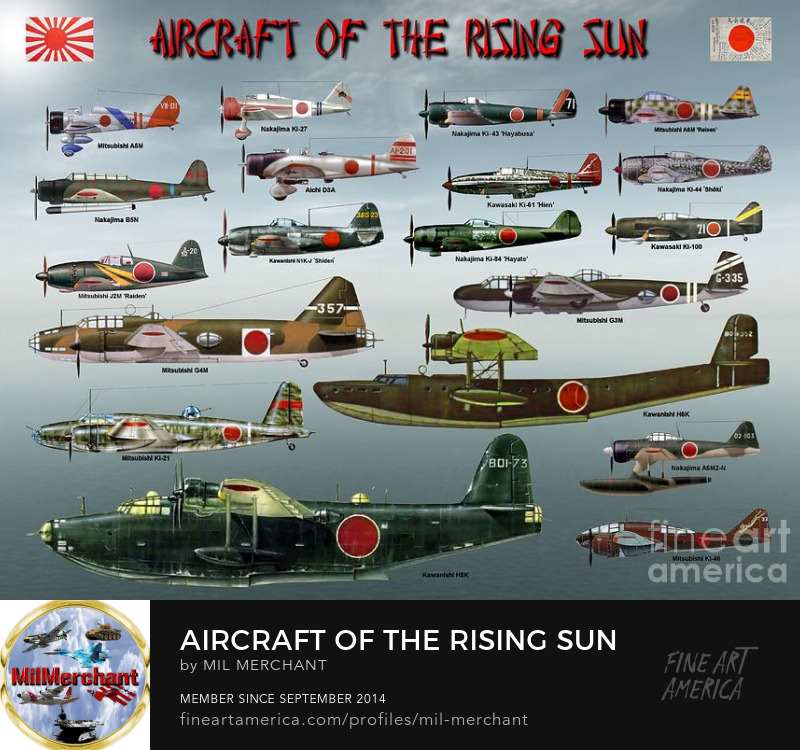The Nakajima B5N (Allied designation: 'Kate') was the most successful Japanese torpedo bomber of the Second World War, playing a major part in every carrier battle in the first two years of the Pacific war. The B5N was the first truly successful Japanese torpedo bomber. It was used both as a torpedo plane and as a level bomber.
Development
In 1935 the Navy issued a 10-Shi specification for a carrier attack bomber. The new aircraft was to be a single engined monoplane, with a wing span of no more than 52ft 4 29/32in, and a folded wing span of less than 24ft 7 9/32in (to fit on the elevators on Japanese aircraft carriers). It was to have a top speed of 205mph, an endurance of 4 hours normally or 7 hours maximum, to carry a crew of three and to be powered by either the Nakajima Hikari or Mitsubishi Kinsei radial engine. The B5N was designed by a team led by Katsuji Nakamura in response to a 1935 specification by the Navy for a newer torpedo bomber. The first prototype(B5N1) flew in January 1937 and was ordered into production soon afterwards with the full designation Type 97 Carrier Attack Bomber known to the Allies under the designation of 'Kate'. The B5N1 introduced a number of important innovations to Japanese carrier aviation, including retractable landing gear and wings that could be folded at their midpoints for carrier stowage. The original design also featured Fowler wing flaps and hydraulic folding wings. Both proved problematic, and they and were replaced with conventional flaps and manual wing folding. Powered by a Nakajima Hikan radial engine, the low-wing three-crew monoplane had inwards-retracting wide-track landing gear and was exceptionally clean.. The first prototype was completed in December 1936 and made its maiden flight in January 1937. The new aircraft reached a top speed of nearly 230mph, well above the Navy's requirements. In 1939 the improved B5N2 Model 12, or Type 97 Carrier Attack Bomber Model 12, appeared with a more powerful Sakae 11 engine in a smaller cowling, although armament and bombload were unchanged, and this version remained in production until 1943. When Japan attacked the USA the B5N2 had wholly replaced the B5N1.
Back to Top
Into Service
The B5N soon saw combat, first in the Sino-Japanese War, where combat experience revealed several weaknesses in the original B5N1 production model. These were mainly concerned with the lack of protection that the design offered its crew and its fuel tanks. Keen to maintain the high performance of the type, the Navy was reluctant to add weight in the form of armor, and instead looked to obtaining a faster version of the aircraft in the hopes of outrunning enemy fighters. The B5N2 was given a much more powerful engine, the Nakajima Sakae 11 radial engine and various modifications were made to streamline it. Although its performance was only marginally better, and its weaknesses remained un-remedied, this version replaced the B5N1 in production and service from 1939.
Back to Top
Pacific War
The second version, the B5N2, began its combat career at Pearl Harbor, when 144 of these planes took part in the attack. Flying from the Fleet Carriers of the IJNAS, the Akagi, Kaga, Hiryu, Soryu, Shokaku and Zuikaku air groups raided targets from Guam to Australia as well as a foray into the Indian Ocean(including Rhyujo and Hiyo, but less Kaga which returned to Japan for repairs from hitting a reef in February), sinking a number of British warships. The greatest successes of the B5N2 were the key roles it played in sinking the United States Navy aircraft carriers USS Lexington and USS Hornet, and the crippling of the USS Yorktown at Midway, however, with the loss of four fleet carriers at Midway and the decimation of the Zuikakus' air group in the battle of the Coral Sea a month earlier, there was a severe decline in replacement pilots. The B5N2 fought on in the remaining IJN Fleet Carriers Air groups in the battles of Guadalcanal, Eastern Solomons, Santa Cruz in 1942, with a lull in fighting until June 1944. The final collapse of the Japanese Naval Air Arm was in the Battle of the Phillipine Sea, where combined with its replacement, the new Nakajima B6N 'Tenzan', it was no match for the hordes of F6F 'Hellcat's, who had shot down nearly 400 IJN aircraft and with such destruction of these newly reformed IJN Air groups, the battle was refered to as 'The Great Marianas Turkey Shoot'.
Back to Top
Final Days
B5N2s were also used as bombers during the unsuccessful defence of the Philippines in October 1944, suffering severe losses. It proved to be Japan's best carrier-based torpedo bomber until 1944, when it was replaced by the B6N Tenzan. After being replaced by the B6N, the B5Ns were withdrawn to second-line land-based duties and on account of their excellent range, they were assigned to antisubmarine and maritime reconnaissance duties in areas beyond the range of Allied fighters. Some of the aircraft used for this latter purpose were equipped with early radars and magnetic anomaly detectors. Like most Japanese aircraft, it ended up being used a kamikaze plane. A total of 1,149 planes were built between 1937 and 1943.
Back to Top
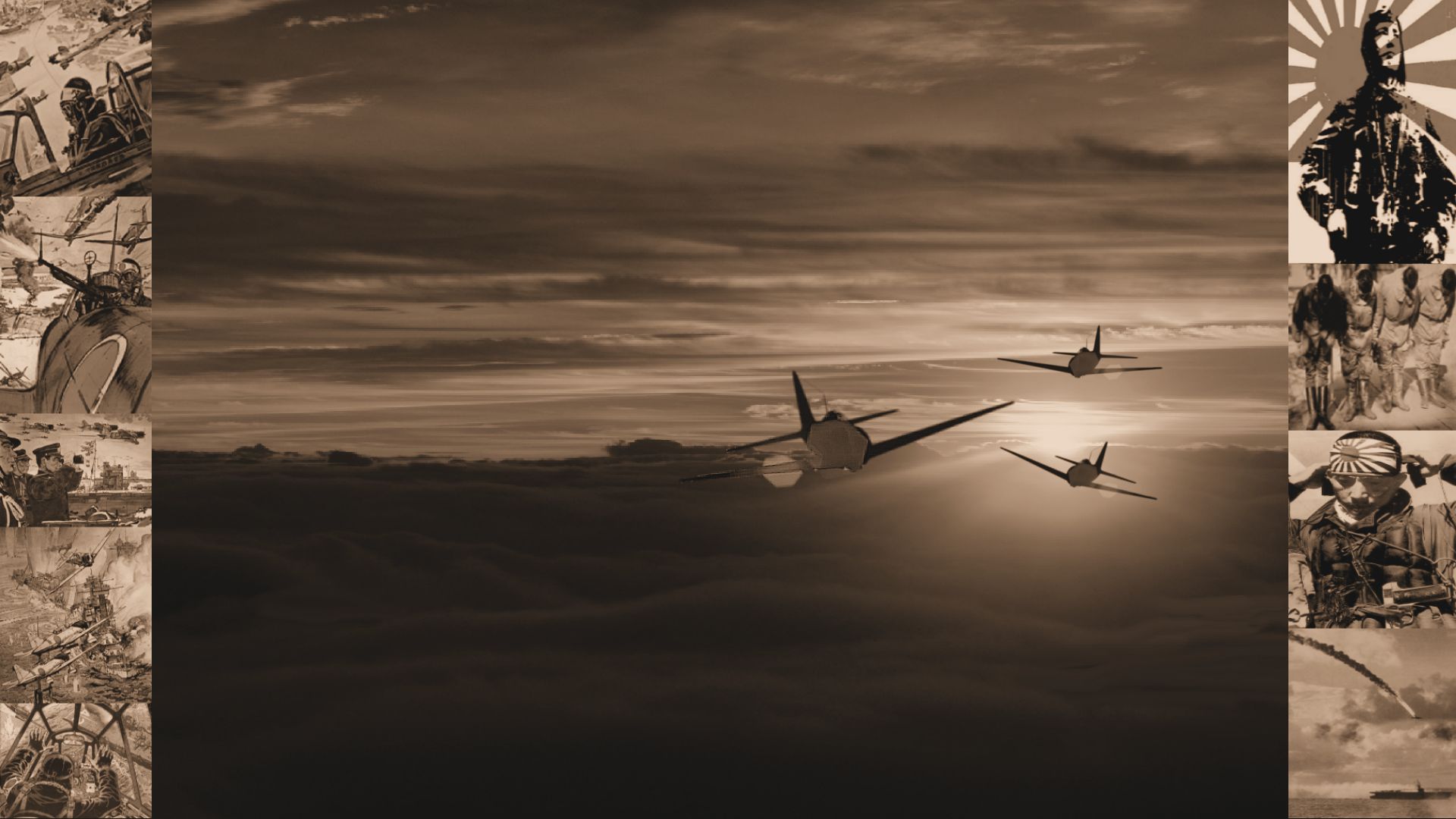


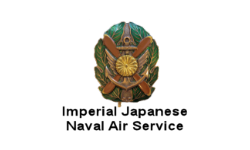
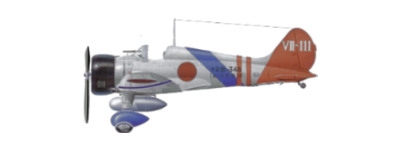 A5M
A5M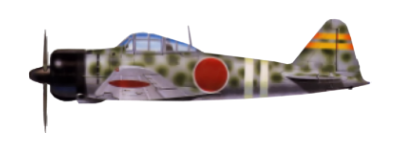 A6M Rei-sen
A6M Rei-sen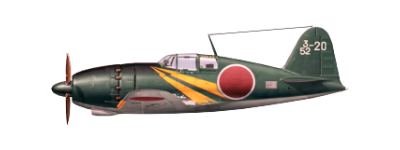 J2M Raiden
J2M Raiden N1K Shiden
N1K Shiden D3A
D3A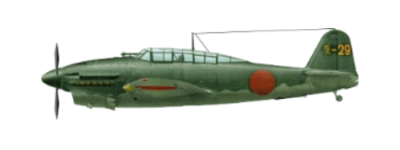 D4Y Suisei
D4Y Suisei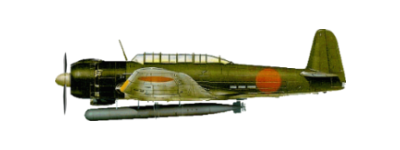 B6N Tenzan
B6N Tenzan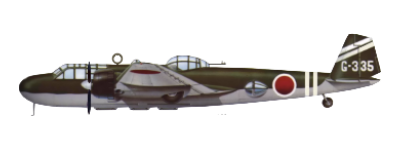 G3M
G3M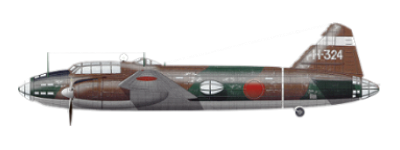 G4M
G4M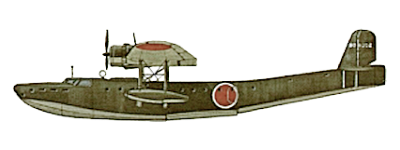 H6K
H6K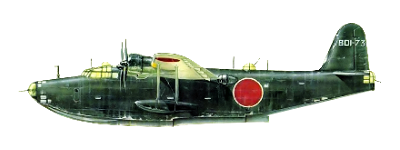 H8K
H8K
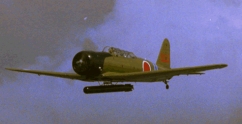


 Nakajima B5N
Nakajima B5N